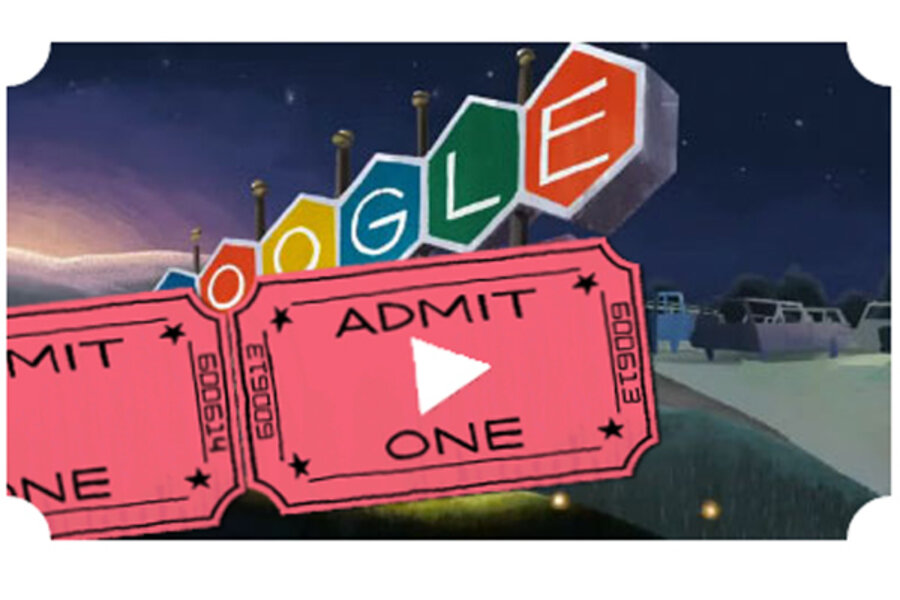First drive-in theater doodle and the DIY drive-in movie revival
Loading...
Google's video homage to the drive-in theater (click on the movie ticket to watch) embodies the concept at its peak in the 1950s, when more that 5,000 drive-in movie theaters dotted the American landscape.
On June 6, 1933, Richard Hollingshead Jr. opened the first drive-in theater on Crescent Boulevard in Camden, New Jersey. Except he didn't call it a drive-in theater. That came later. He called it the "park-in" movie theater. The cost for a ticket: 25 cents per vehicle and 25 cents per person.
While the number of drive-in theaters in the US has dwindled to 366, according to the United Drive-in Theaters Association, there's something of a DIY revival today that echoes Mr. Hollingshead's own early tests in his driveway at 212 Thomas Avenue in Camden, New Jersey. Hollingshead used a 1928 Kodak projector to show home movies on a screen hanging between two trees in his yard.
Today's incarnations are called 'guerilla drive-ins" – and they reflect the simplicity, affordability, and, frankly, the basic fun of the concept.
"Avid movie-lovers and those who have fond memories of watching movies under the stars are trying to bring back the essence of the drive-in by doing it themselves. They're lugging projectors, FM transmitters, and even snacks in the back of their cars and screening movies at locations as diverse as the side of a Cineplex and a grain silo in the middle of a field. Call it the guerrilla drive-in. Across the United States, people are hosting screenings of cult classics and mainstream movies," according to The Christian Science Monitor.
But the idea goes back way before Hollingshead, according to Susan Sanders, coauthor of "The American Drive-In Movie Theatre" and "Drive-In Movie Memories." She notes that as soon as the movie projector was invented, people were watching movies under the stars. She cites 1906, when Hawaiians used to watch silent Kinescope films projected on the side of buildings.
But Sanders allows the innovation that Hollingshead brought and spread was the marriage of cars to movies. He patented the idea in May of 1933 and opened Park-In Theaters Inc., a month later. And, the idea spread. One of the largest drive-in theaters was the All-Weather Drive-In, which epitomized the concept: It had space for 2,500 cars, a kid's playground, and a full-service restaurant on a 28-acre lot in Copiague, New York.
Looking for a drive-in theater near you? Drive-in movie.com lists theaters by states, and has a profile of each one.
For more on how technology intersects daily life, follow us on Twitter @venturenaut.








